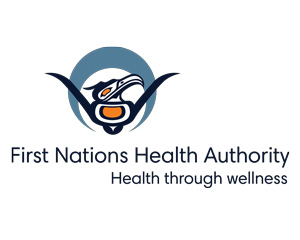The Story of the Committment Stick
Esk'etemc Commitment Sticks are symbols of a personal commitment to live violence free and a commitment to actively stop violence against Indigenous women and girls.
The idea of the Commitment Sticks started with Alkali Lake (Esk'etemc) Elder Fred Johnson Sr., with the support of Chief Charlene Belleau. The Commitment Sticks represent working together on issues involving violence against Indigenous women and girls.
"Violence against Indigenous women and girls is not just an issue now that it's before the media and the public—it's been an issue for several years," says Chief Belleau. "The government and the police may now have their programs, policies and procedures, but at the end of the day, violence against our women is also a community responsibility. So my push is for us to provide leadership and to do something ourselves, without worrying about what the government or police are doing about it. We might not be able to control what's going on in a big city or anywhere else, but we can start with our own families and communities and Nations."
Commitment sticks are concerned with this issue, an issue that we can—and must—address. They flow from the idea that we must be involved in our own healing; it's not a matter of bringing in "experts" who can fix the community, but instead it's us, our culture, our leaders—guided by tradition and ceremony—that can help us.
Esk'etemc frontline workers and leadership work together and all agree that the cycle of intergenerational trauma, including violence, has to stop with us. Regardless of whether we were abused at residential school, we must not pass it on to our children. Each man has signed a pledge to live violence free, stop violence against women and hold other men accountable. They keep their pledges on little cards in their wallets.
Elder Fred Johnson and his family prepare each commitment stick with prayer.
Commitment sticks are a gift from the Esk'etemc community, who are honoured to have Hereditary Chiefs, Chiefs and frontline workers take up this commitment. Working together and being proactive will support families that experience the trauma associated with violence and abuse.
The Significance of a Commitment Stick
Esk'etemc (Alkali) Elder Fred Johnson designed Commitment Sticks to signify the sacred responsibilities we have for the health and safety of our Indigenous women and girls, as well as to remind us of their infinite value. The act of picking up a Commitment Stick symbolizes a personal and professional commitment of time to help eliminate violence against Indigenous women and girls. A lot of prayer and ceremony goes into the creation of a Commitment Stick; they are also meant to help us cleanse our minds, bodies and spirits of any violence we may have perpetrated against Indigenous women and girls.
One venue where Commitment Sticks were publicly picked up was at Gathering Wisdom in 2015. Over 120 Chiefs and leaders held the sticks high and committed to live violence free, and to collectively work together to stop violence against Indigenous women and girls. They acknowledged that honouring our women -- our grandmothers, mothers, sisters, daughters, wives, partners and nieces -- will bring balance back into our lives and ensure healthy and strong families and communities into the future.
Commitment Stick Design
The colours of the Commitment Stick represent the need for the four races to work together to stop violence against Indigenous women and girls, with an understanding that we are all equally valuable. With the red, we honour and mourn our murdered and missing Indigenous women; with the yellow, we honour our breath of life; with the black, we honour our body; and with the white, we honour the knowledge and wisdom of the Elders.

